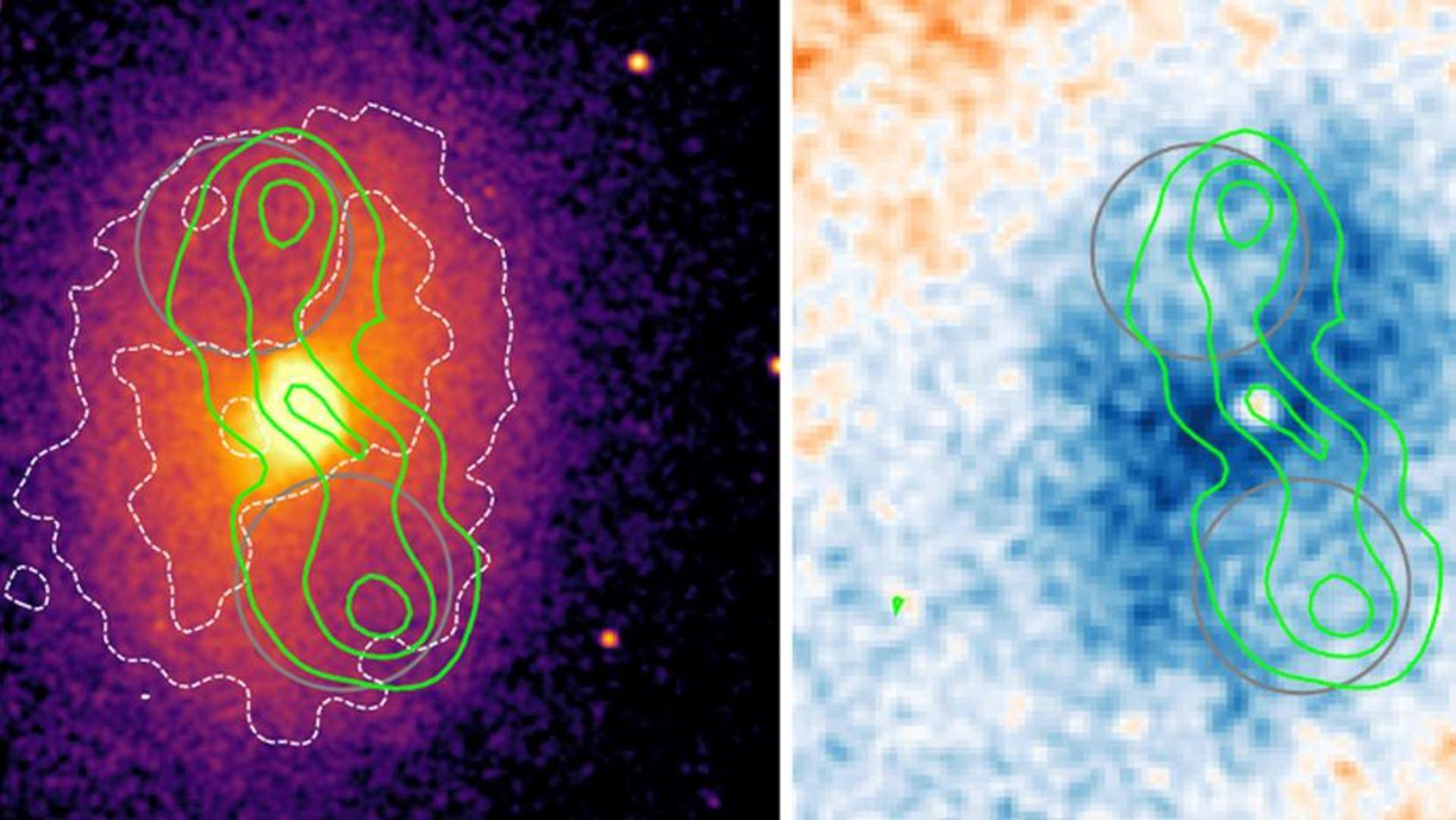
Black hole spotted 2.6 billion light-years away is blowing 'bubbles'
What's the story
Space is a baffling place and black holes are even weirder. Now, astronomers have found a black hole in galactic cluster MS0735 located 2.6 billion light-years away, which is 'burping out' energy and blowing 'radio bubbles' in the material surrounding it. The researchers claim that this is one of the most energetic outbursts ever emanating from a supermassive black hole.
Context
Why does this story matter?
By observing the black hole outflow in MS0735, scientists are trying to determine how gas bubbles are created in galactic clusters and how they remain stable. The MS0735 system is being observed over different frequencies of electromagnetic radiation, to gain a clear insight into the physics of such clusters. Black holes are an enigma, and thus extensive research is required to decipher their nature.
Details
What are galactic clusters?
Most massive galaxies have supermassive black holes at their center. Thousands of such galaxies exist together in groups called galactic clusters. These clusters pack incredibly hot gas or plasma at temperatures of up to 50 million degrees Celsius. The plasma might cool over time and permit cold dense gas to give birth to new stars. However, feeding black holes can hinder this process.
Process
How do black holes 'burp' out energy?
Black holes can reheat cooled plasma via violent outbursts of material. These bursts take place when instead of swallowing matter, it is dragged to the hole's poles and flushed out at near lightspeed via a process called "feedback." The jets of material form cavities in the gas surrounding the hole, and fill it with bubbles that emit radio waves.
Analysis
How was the energy burst in MS0735 observed?
The data from the MUSTANG-2 receiver of the National Science Foundation's (NSF) Green Bank Observatory was complemented by X-ray data on MS0735, collected by NASA's Chandra X-ray Observatory. The scientists analyzed the radiation emitted 380,000 years after the Big Bang. They found that the cavities around the black hole were filled with heat, high-speed charged particles called cosmic rays, turbulence, and even magnetic fields.